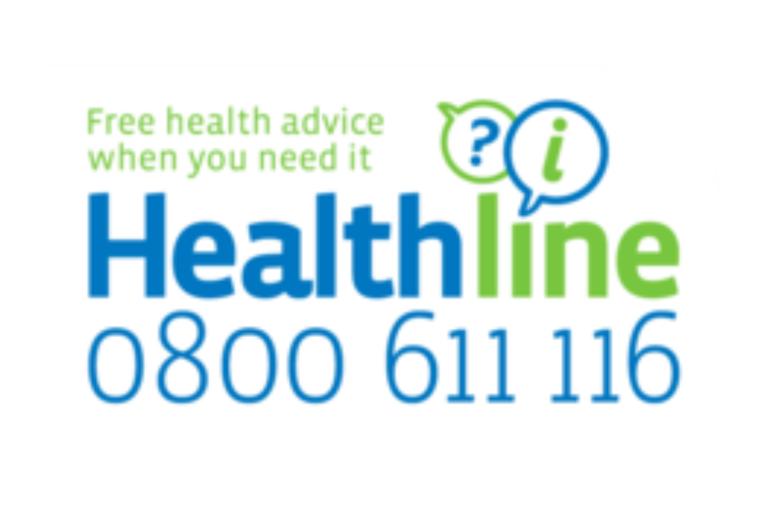Key points about hand, foot and mouth disease
- hand, foot and mouth disease is a common viral illness in tamariki (children)
- tamariki may get red or fluid-filled blisters on their hands, feet or other parts of their body
- tamariki may also get painful red blisters in and around their mouth
- keep your child at home until they are well again and all the blisters have dried
- most tamariki recover without needing much treatment
What is hand, foot and mouth disease?
Hand, foot and mouth disease is a common viral illness in tamariki.
Human hand, foot and mouth disease is not related to foot and mouth disease in animals.
Who gets hand, foot and mouth disease
Hand, foot and mouth disease can affect anyone. It is most common in pre-school tamariki.
Hand, foot and mouth disease is more common in warm weather but it can happen at any time of year.
Signs and symptoms of hand, foot and mouth disease
Symptoms start around 4 to 6 days after infection with the virus. Your child may have a mild fever for 1 to 2 days before other symptoms appear.
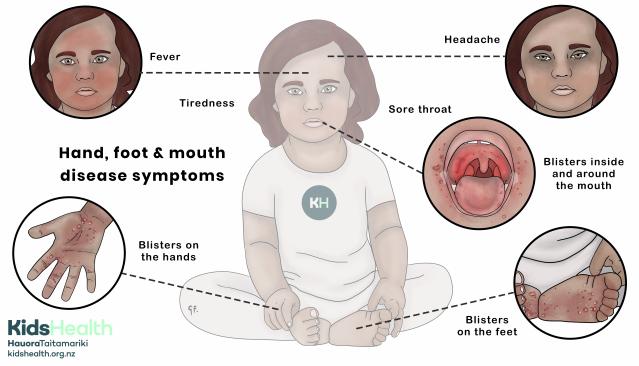
Illustration of symptoms of hand, foot and mouth disease.
Source: KidsHealth
transcribeTranscript
Title: Hand, foot & mouth disease symptoms
Main picture: A child sitting cross-legged with labels pointing to different symptoms. The symptom illustrations are connected to the main illustration with dotted lines.
There are 7 symptoms which are labelled:
- Fever
- Headache
- Sore throat
- Blisters inside and around the mouth
- Blisters on the hands
- Blisters on the feet
- Tiredness
There are 5 illustrations showing close-ups of selected symptoms:
- Fever: Child’s face looking hot and flushed.
- Blisters inside and around the mouth: Red sores and blisters in the mouth and on the tongue.
- Blisters on the hands: A hand with red spots and blisters.
- Blisters on the feet: Feet with red spots and blisters.
- Tiredness: Child's face looking sleepy and worn out.
At the bottom left is the KidsHealth logo with the website: kidshealth.org.nz.
Blisters
Small blisters usually appear first around the mouth, on the gums and on the sides of the tongue. Your child may complain of a sore mouth or throat. They may also go off their food and refuse fluids.
Small blisters can appear on the palms of the hands and soles of the feet. Some tamariki may also get a rash around their bottom. The rash can appear anywhere on your child's body.
These blisters are not usually itchy or painful. They usually go away after 7 to 10 days.
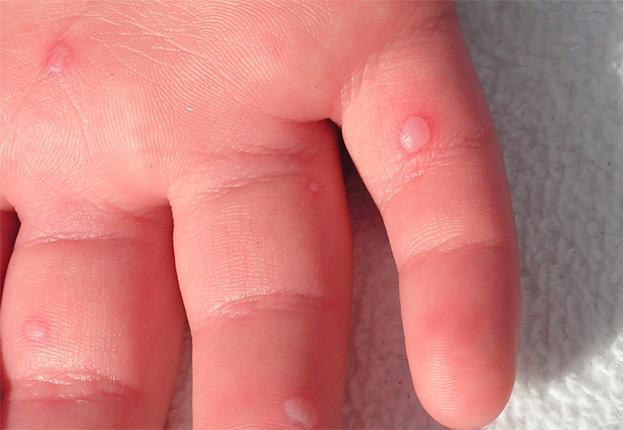
Photo of blisters on the hand of a child with hand, foot and mouth disease.
Source: KidsHealth
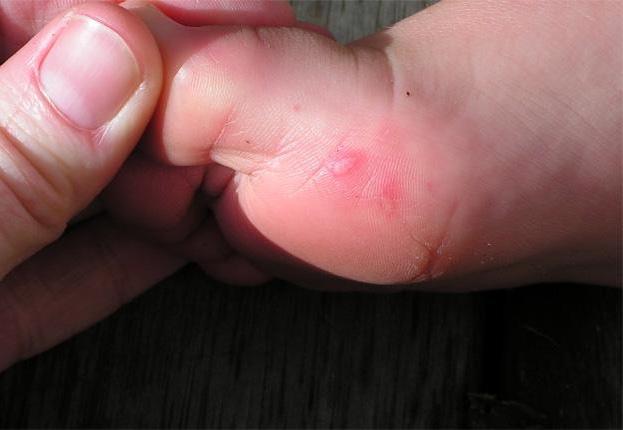
Photos of blisters on the foot of a child with hand, foot and mouth disease.
Source: KidsHealth
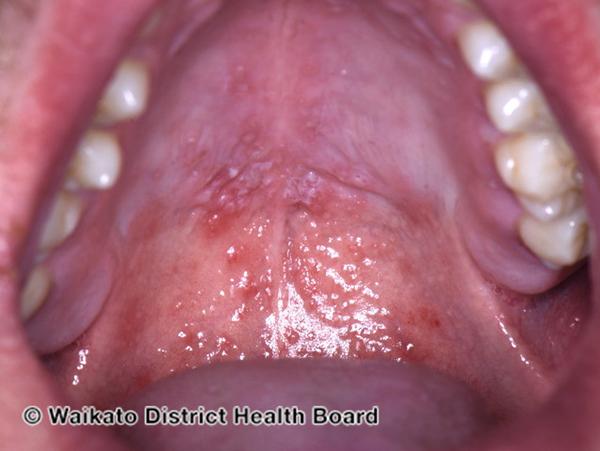
Photo of blisters in the mouth of a child with hand, foot and mouth disease.
Source: DermNet
Other symptoms
- loss of appetite
- a sore throat
- drooling
- headache
- tiredness
Tamariki with hand, foot and mouth disease usually get better in about 3 to 7 days. Sometimes the rash lasts a bit longer.
When to get medical help for your child
Call Healthline on 0800 611 116 or take your child to a health professional if:
- they develop a rash and you don't know what's causing it
- hey can't drink because of a painful mouth
- they have less than half of their normal wet nappies
- you are worried about them
How hand, foot and mouth disease spreads
Hand, foot and mouth disease is very easy to catch.
It spreads from person to person by coughing or sneezing. You can also get it from contact with mucus, saliva, blisters, or the poo of an infected person.
Preventing the spread of hand, foot and mouth disease
Keep your child at home if they are unwell or have blisters. Keep them at home until all the blisters have dried.
Hand washing or sanitising helps decrease the chance of spreading the infection. This is because the virus is in poo, blisters and saliva, and from a runny nose.
Take special care to wash or sanitise hands after contact with poo as the virus can be in poo for several weeks.
Caring for your child with hand, foot and mouth disease at home
Food and fluids
If your child's mouth is sore, they might like cool drinks and ice blocks.
Make sure they have plenty to drink. Offer small amounts of fluid often.
Your child may not feel like eating much. Their appetite will return as they start to get better.
Medicine
There is no specific medicine to treat hand, foot and mouth disease.
If your child with hand, foot and mouth disease is miserable, you can give them paracetamol. Follow the dosage instructions on the bottle. It is dangerous to give more than the recommended dose. Never give your child aspirin. This may increase the risk of Reye syndrome - a rare and serious illness.
Healthline is available 24 hours a day, 7 days a week on 0800 611 116. Call Healthline if you need advice about a child of any age who is unwell, hurt, or has any symptoms of sickness. It's free to callers throughout New Zealand, including from a mobile phone.
Acknowledgements
Illustration by Dr Greta File. Property of KidsHealth.
Image of blisters in the mouth reproduced from DermNet NZ.
